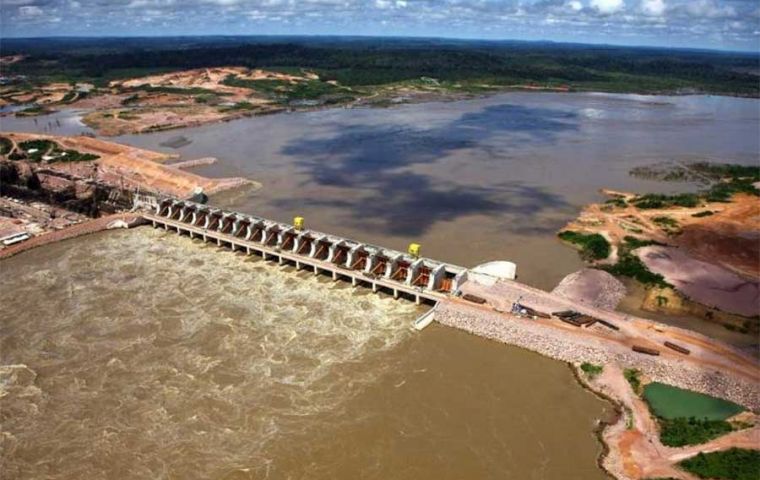MercoPress. South Atlantic News Agency
Brazil's water authority finds 241 dams under safety risks
 There is no specific item in the federal or state budgets for dam safety, which falls under water infrastructure
There is no specific item in the federal or state budgets for dam safety, which falls under water infrastructure According to a dam safety report released this week by Brazil's water and sanitation authority, ANA, about the 2024–25 period, 241 of these structures need priority risk management, since their managers have not complied with all the national policy requirements.
“In the event of an accident involving these structures, there is a risk to people or important equipment that could compromise the supply of essential services. These are dams located in 24 Brazilian states,” the agency stated.
Most of the dams under risk (96) belong to private companies, government entrepreneurs (39), and mixed-capital companies (10). Another 94 show no information on who is responsible. The main purposes of these facilities are flow regulation (23.7%), disposal of mining tailings (21.2%), irrigation (16.6%), human water supply (12.9%), and aquaculture (7.1%).
According to official figures, 97% of the dams are used for water storage and 36% for irrigation. This represents a surge of 8.2% in the total number of dams registered in one year. Of those registered, 6,202 (22%) fall within the scope of the dam safety policy.
Dams under the safety policy feature at least one of the following: a total capacity greater than 3 million cubic meters; a reservoir that contains hazardous waste, or medium to high associated potential damage (involving risks of human loss); and a dam massif (wall) higher than 15 meters.
The report also mentioned 24 accidents and 45 incidents involving dams in Brazil last year, with two fatalities and various types of damage, including the destruction of public roads, the collapse of bridges, damage to homes, the disappearance of animals, the closure of roads and highways, and environmental damage.
Under the safety policy, accidents must include the impairment of a dam’s structural integrity resulting in total or partial collapse. Incidents, in turn, affect the performance of the dam or attached structures and can lead to accidents if they are not remedied.
Among the top causes of damage in the 24 accidents, the majority (16) are linked to flooding or rainfall events. There were 21 dam collapses last year, and extreme weather events were reported for more than half of these (13).
Rio Grande do Sul, the state that experienced the worst climate tragedy in its history, recorded at least 21 incidents and three accidents involving dams.
In 2024, inspection bodies carried out 2,859 field visits—down 7% from the 2023 report. Documentary inspections, in turn, reached 3,162.
Among the reasons mentioned is a shortage of inspection workers. The 33 federal, state, and municipal inspection bodies have a total of 356 professionals, of whom 169 (48%) are exclusively dedicated to dam safety, and another 180 (52%) workers combine this work with other activities.
“In 28 of the 33 inspection bodies (85%), work on dam safety is carried out with less than the recommended number of staff,” the report reads.
The study also pointed out that there was no specific item in the federal or state budgets for dam safety, which falls under water infrastructure. (Source: Agencia Brasil)




Top Comments
Disclaimer & comment rulesCommenting for this story is now closed.
If you have a Facebook account, become a fan and comment on our Facebook Page!